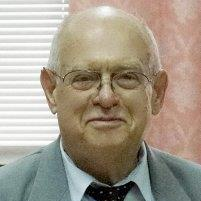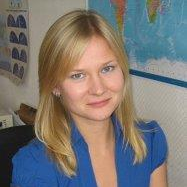International Journal of Image, Graphics and Signal Processing (IJIGSP)
IJIGSP Vol. 15, No. 1, 8 Feb. 2023
Cover page and Table of Contents: PDF (size: 309KB)
Algorithm of Processing Navigation Information in Systems of Quadrotor Motion Control
Full Text (PDF, 309KB), PP.1-11
Views: 0 Downloads: 0
Author(s)
Index Terms
Quadrotor, Processing information, Digital control algorithm, Parametric optimization, Static output feedback, Static state feedback, Simulation, Turbulence.
Abstract
The article deals with creating an algorithm for processing information in a digital system for quadrotor flight control. The minimization of L2-gain using simple parametric optimization for the synthesis of the control algorithm based on static output feedback is proposed. The kinematical diagram and mathematical description of the linearized quadrotor model are represented. The transformation of the continuous model into a discrete one has been implemented. The new optimization procedure based on digital static output feedback is developed. Expressions for the optimization criterion and penalty function are given. The features of the creating algorithm and processing information are described. The development of the closed-loop control system with an extended model augmented with some essential nonlinearities inherent to the real control plant is implemented. The simulation of the quadrotor guidance in the turbulent atmosphere has been carried out. The simulation results based on the characteristics of the studied quadrotor are represented. These results prove the efficiency of the proposed algorithm for navigation information processing. The obtained results can be useful for signal processing and designing control systems for unmanned aerial vehicles of the wide class.
Cite This Paper
Anatoly Tunik, Olha Sushchenko, Svitlana Ilnytska, "Algorithm of Processing Navigation Information in Systems of Quadrotor Motion Control", International Journal of Image, Graphics and Signal Processing(IJIGSP), Vol.15, No.1, pp. 1-11, 2023. DOI:10.5815/ijigsp.2023.01.01
Reference
[1]V.B. Larin and A.A. Tunik. “On problem of synthesis of control system for quadrocopter,” International Applied Mechanics, vol. 53, no. 3, pp. 342–348, 2017.
[2]S. Kurak and M. Hodzic, “Control and estimation of a quadcopter dynamical model,” Periodicals of Engineering and Natural Sciences, vol.6, no. 1, pp. 63‒75, March 2018.
[3]B. B. Sumantri, N. Uchiyama, and S. Sano, “Least-square based sliding mode control for a quad-rotor helicopter,” Proc. of the 2013 IEEE/SICE International Symposium on System Integration, DOI: 10.1109/SII.2013.6776702.
[4]F. Rinaldi, S. Chiesa, and F. Quagliotti, “Linear quadratic control for quadrotors UAVs dynamics and formation flight,” Journal of Intell. Robot. Syst., no.70, pp-203–220, 2013.
[5]S. C. Voicu (Stoicu) and A.-M. Stoica, “Centralized and distributed linear quadratic design for flight formations,” Incas Bulletin, vol. 13, issue 2, pp. 175 – 184, 2021.
[6]V. B. Larin, А.Аl-Lawama, and A.A. Tunik, “Exogenous disturbance compensation with static output feedback,” Appl. & Comput. Math., vol.3, no.2, pp.75-83, 2004.
[7]J. Gadewadikar, F. Lewis, and M. Abu-Khalaf, “Necessary and sufficient conditions for H-infinity static output feedback control,” Journal of Guidance, Control and Dynamics, vol. 29, pp. 915 – 921, 2006.
[8]J. Gadewadikar, F. Lewis, L. Xie, V. Kucera, M. Abu-Khalaf. Parameterization of all Stabilizing H∞ Static State-feedback Gains: Application to Output-feedback Design. Automatica, 43, pp. 1597 – 1604, 2007.
[9]A.A. Tunik, S.I. Ilnytska, and O.A. Sushchenko, “Synthesis of quadrotor robust guidance and control system via parametrization of all stabilizing H-infinity state feedback gains,” Electronics and Control Systems, no. 4, pp. 33–41, 2019.
[10]O.A. Sushchenko, Y.N. Bezkorovainyi, and N.D. Novytska, “Nonorthogonal redundant configurations of inertial sensors” In Proc. of 2017 IEEE 4th International Conference on Actual Problems of Unmanned Aerial Vehicles Developments, APUAVD 2017 - Proceedings, 2018, 2018-January, pp. 73–78.
[11]Q. Jiao, H. Modares, F.L. Lewis, S. Xua, L. Xie, “Distributed L2-gain output-feedback control of homogeneous and heterogeneous systems,” Automatica, vol. 71, pp. 361 – 368, 2016.
[12]O.A. Sushchenko, Y.N. Bezkorovainyi, and N.D. Novytska, “Theoretical and experimental assessments of accuracy of nonorthogonal MEMS sensor arrays,”Eastern European Journal, 2018, vol. 3, no. 9 (93), pp. 40–49.
[13]P. Castillo, R. Lozano, and A. Dzul, “Stabilization of a mini rotorcraft with four rotors,” IEEE Control Systems Magazine, vol. 25, no. 6, pp. 45–55, December 2005.
[14]G.F. Franklin, J.D. Powell, and M.L. Workman, Digital Control of Dynamic Systems, Boston: Addison- Wesley Longman Inc., 1998, 742 p.
[15]S. Skogestad and I. Postlethwaite, Multivariable Feedback Control. Analysis and Design, Hoboken: John Wiley& Sons, 1997, 559 p.
[16]L.S. Zhiteckii, V.N. Azarskov, K.Y. Solovchuk, and O.A. Sushchenko, Discrete-time robust steady-state control of nonlinear multivariable systems: A unified approach, IFAC Proceedings Volumes, 2014, 19, pp. 8140–8145.
[17]B.C. Kuo, Digital Control Systems, Austin: Holt, Rinehart, and Winston, Inc., 1980, 448 p.
[18]J.Fu and R. Ma, Stabilization and Hinf Control of Switched Dynamic Systems, Springer, 2020, 161 p.
[19]S.S. Niu and D. Xiao, Process Control, Springer, 2022, 501 p.
[20]R.G. Sanfelice, Hybrid Feedback Control, Princeton University Press, 2021, 424 p.
[21]L.Wang, PID Control System Design and Automatic Tuning using MATLAB/Simulink, Hoboken, NJ: Wiley, 2020.
[22]A.B. Elghonemy and A.A.El Badawy, “Robust H-infinity controller for a single-axis spacecraft,” 12th International Conference on Electrical Engineering (ICEENG), 7–9 July 2020, doi:10.1109/ICEENG645378.2020.9171723
[23]R.C. Leishman, J.C. Macdonald, R.W. Beard, T.W. McLain, “Quadrotors and accelerometers,” IEEE Control Systems Magazine, pp. 28 – 41, February 2014.
[24]R.W. Beard and T.W. McLain, Small Unmanned Aircraft. Theory and Practice, Princeton University Press, 2012.
[25]F. Yanovsky, “Specified for Air Safety, Monitoring Atmospheric Phenomena Including the Volcano Dust,” Proceedings, 11th International Radar Symposium IRS-2010, Vol.1, pp.1-4.
[26]F.I. Yanovskij, V.A. Panits, “Application of an antenna with controlled polarization for the detection of hail and icing zones,” Izvestiya VUZ: Radioelektronika, 1996, 39 (10), pp. 32–42.
[27]Yahya Khraisat and Felix Yanovsky, “Models of Atmospheric Turbulence in the Problems of Remote Sensing Measurement in Clouds and Precipitation,” Proceedings Mediterranean Microwave Symposium MMS’2003, May 6-8, 2003, Cairo, Egypt, pp. 15-18.
[28]F.J. Yanovsky, H.W.J. Russchenberg, L.P. Ligthart, and V.S. Fomichev, “Microwave Doppler-Polarimetric Technique for Study of Turbulence in Precipitation,” IEEE 2000 International Geoscience and Remote Sensing Symposium, Hilton Hawaiian Village Honolulu, Hawaii, 24-28 July 2000, Vol. V, pp. 2296-2298.
[29]F. J. Yanovsky, I. G. Prokopenko, K. I. Prokopenko, H. W. J. Russchenberg, and L. P. Ligthart, "Radar estimation of turbulence eddy dissipation rate in rain," IEEE International Geoscience and Remote Sensing Symposium, 2002, pp. 63-65 vol.1, doi: 10.1109/IGARSS.2002.1024942.
[30]F.J. Yanovsky, “Simulation study of 10 GHz radar backscattering from clouds and solution of the inverse problem of atmospheric turbulence measurements,” Computation in Electromagnetics, IEE (UK) No. 420, 1996, pp. 188-193.
[31]F. J. Yanovsky, A.C.P. Oude Nijhuis, O.A. Krasnov, C.M.H. Unal, H.W.J. Russchenberg, and A. Yarovoy, “Turbulence Intensity Estimation Using Advanced Radar Methods,” Proceedings European Radar Conference (EuRAD 2015), Paris, France, pp. 141-144. DOI: 10.1109/EuRAD.2015.7346257.
[32]F. Yanovsky, “Inferring microstructure and turbulence properties in rain through observations and simulations of signal spectra measured with Doppler–polarimetric radars,” In: Mishchenko, M., Yatskiv, Y., Rosenbush, V., Videen, G. (eds) Polarimetric Detection, Characterization and Remote Sensing. NATO Science for Peace and Security Series C: Environmental Security. Springer, Dordrecht, 2011. https://doi.org/10.1007/978-94-007-1636-0_19.
[33]F.J. Yanovsky, C.M.H. Unal, H.W.J. Russchenberg, and L.P. Ligthart, “Doppler-Polarimetric Weather Radar: Returns from Wide Spread Precipitation,” Telecommunications and Radio Engineering (English translation of Elektrosvyaz and Radiotekhnika), 2007, 66(8), pp. 715-727. DOI: 10.1615/TelecomRadEng.v66. i8.20.
[34]F.J. Yanovsky, H.W.J. Russchenberg, and C.M.H. Unal, “Retrieval of Information about Turbulence in Rain by Using Doppler-Polarimetric Radar,” IEEE Transactions on Microwave Theory and Techniques, Feb., Vol. 53, No 2, 2005, pp. 444 – 450. DOI: 10.1109/TMTT.2004.840772.
[35]D. N. Glushko and F.J. Yanovsky, “Analysis of differential Doppler velocity for remote sensing of clouds and precipitation with dual-polarization S-band radar,” International Journal of Microwave and Wireless Technologies, 2010, Vol. 2, issue 3-4, pp. 391-398. DOI: https://doi.org/10.1017/S1759078710000504.
[36]F. J. Yanovsky and I. M. Braun, “Models of Scattering on Hailstones in X-band,” In First European Radar Conference, EURAD, Amsterdam, Netherlands, 2004, pp. 229–232.
[37]K. Patel, “Design and analysis of self syabilized platform,” in International Journal of Emerging Technologies and Innovative Research, vol.6, issue 5, 2019, pp.404 – 409.
[38]J.Li, J. Lu, and W. Su, “Stabilizability of minimum-phase systems with colored multiplicicative uncertainty,” in Control Theory and Technology, vol. 20, issue 3, 2022, pp. 382–391.
[39]B.I. Kuznetsov, T.B. Nikitina, and I.V. Bovdui, “Multiobjective synthesis of two degree of freedom nonlinear robust control by discrete continuous plant,” in Tekhnichna Elektrodynamika. Institute of Electrodynamics National Academy of Science of Ukraine, no 5, 2020, pp. 10-14.
[40]I. Ostroumov, K. Marais, and N. Kuzmenko, “Aircraft positioning using multiple distance measurements and spline prediction,” Aviation, vol. 26, no. 1, pp. 1-10, 2022.
[41]B.I. Kuznetsov, T.B. Nikitina, and I.V. Bovdui, “Structural-parametric synthesis of rolling mills multi-motor electric drives,” Electrical engineering & electromechanics, 2020, no. 5, pp. 25-30
[42]I. Ostroumov and N. Kuzmenko, “Configuration Analysis of European Navigational Aids Network,” 2021 Integrated Communications Navigation and Surveillance Conference (ICNS), 2021, pp. 1-9.
[43]R. B. Sinitsyn and F. J. Yanovsky, “Acoustic Noise Atmospheric Radar with Nonparametric Copula Based Signal Processing,” Telecommunications and Radio Engineering, Vol. 71, No. 4, 2012, pp. 327–335, doi: 10.1615/TelecomRadEng.v71.i4.30.
[44]V.V. Chikovani and O.A. Sushchenko, “Differential mode of operation for Coriolis vibratory gyro with ring-like resonator,” In Proc. of 2014 IEEE 34th International Scientific Conference on Electronics and Nanotechnology (ELNANO-2014), Kyiv, Ukraine, April 15-18, 2014, pp. 451-455.
[45]O.A. Sushchenko and A.V. Goncharenko, “Design of robust systems for stabilization of unmanned aerial vehicle equipment,” International Journal of Aerospace Engineering, vol. 2016, Article ID 6054081, 10 p, 2016.
[46]V. Azarskov, A. Tunik, and O. Sushchenko, “Design of composite feedback and feedforward control law for aircraft inertially stabilized slatforms,” International Journal of Aerospace Engineering, Volume 2020, Article ID 8853928, 9 p., 2020.
[47]Yu. Averyanova, A. Averyanov and F. Yanovsky, “The Approach to Estimating Critical Wind Speed in Liquid Precipitation using Radar Polarimetry,” In International Conference on Mathematical Methods in Electromagnetic Theory, MMET, 2012, pp. 517–520.
[48]Schwung, D., Schwung, A., & Ding, S. X. (2019). ACTOR-CRITIC REINFORCEMENT LEARNING FOR ENERGY OPTIMIZATION IN HYBRID PRODUCTION ENVIRONMENTS. International Journal of Computing, 18(4), 360-371.
[49]Belavadi, C., Sardar, V. S., & Chaudhari, S. S. (2022). Alarm Pattern Recognition in Continuous Process Control Systems using Data Mining. International Journal of Computing, 21(3), 333-341.
[50]R. B. Sinitsyn and F. J. Yanovsky, “MIMO Radar Copula Ambiguity Function,” In European Microwave Week 2012: “Space for Microwaves”, EuMW 2012, Conference Proceedings – 9th European Radar Conference, EuRAD 2012, 31 Oct.-2 Nov. 2012, Amsterdam, Netherlands, pp. 146–149.
[51]O.A. Sushchenko, Y.M. Bezkorovayniy, and V.O. Golytsin, “Processing of Redundant Information in Airborne Electronic Systems by means of Neural Networks,” In Proc. of 2019 IEEE 39th International Conference on Electronics and Nanotechnology (ELNANO-2019), 2019, Kyiv, Ukraine, 2019, April 16-18, pp. 652–655.
[52]C. Okoro, M. Zaliskyi, S. Dmytriiev, O. Solomentsev, O. Sribna, "Optimization of maintenance task interval of aircraft systems", International Journal of Computer Network and Information Security, vol.14, no.2, 2022, pp.77-89.
[53]J. M. Hilkert, “Inertially stabilized platform technology”, IEEE Control Systems Magazine, vol. 28, issue 1, 2008, pp. 26–46.
[54]G. Haggart, V.K. Nandikolla, and R. Jia, “Modeling of an inertially stabilized camera system using gimbal platform,’ ASME 2016 International Mechanical Engineering Congress and Exposition, November 11-17, 2016, Phoenix, Arizona, USA, paper No: IMECE2016-6534.


